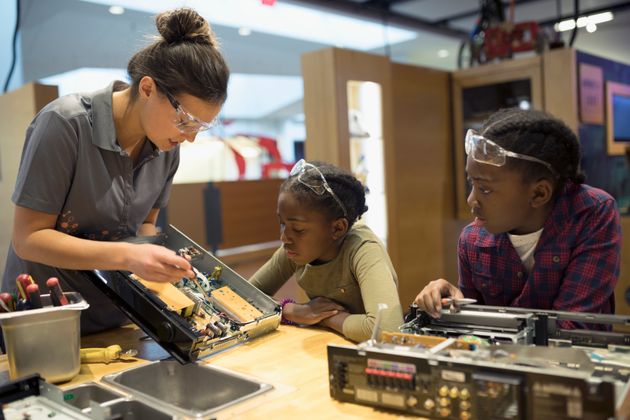
Browse the shelves nowadays and you can find titles on ‘rebel girls’, ‘bad girls’, and ‘fearless girls’. I happen to prefer ‘fantastically great women’, which is sold in the Commons bookshop and is as engaging for four-year-olds as it is for 94 year-olds.
Whatever they’re called, these non-conforming women were pioneers in areas from literature to legislation, ands some of them were the first women to work in the STEM subjects – science, technology, engineering, and maths.
It is therefore disheartening that more than a century after Marie Sklodowska Curie became the first woman to win a Nobel Prize (for Physics in 1903), only one in three 15-year-old girls enjoys STEM subjects, and only one in five are likely to study physics at A-Level. The figures, published today to coincide with the International Day of Women and Girls in Science, are even worse for computing and engineering.
Female engineers make up only 12% of the profession in the UK. Not only is this the lowest figure in Europe, we lag dramatically behind countries such as Latvia, Bulgaria and Cyprus, where women fill almost one in three engineering posts. And according to estimates, demand for graduate engineers outstripped supply by 20,000 people last year.
To become an engineer, you have to study engineering. And to study engineering at university, you have to do both maths and physics at A-Level. Girls are really good at physics: at GCSE, where classes tend to be 50:50, nearly half of the 64,000 girls who passed in 2017 received an A or A* grade. But the majority of those girls don’t continue the subject at A-Level. Maths fares slightly better, with four in ten girls studying the subject at A-Level.
Luckily the government has recognised the scale of the problem and is funding programmes in schools and colleges to increase uptake in these subjects. The Advanced Maths Premium provides £600 of extra funding per pupil per year of sixth form study, and another £600 on top of that if studying further maths as well. Last year the Department for Education granted more than £2million to the Stimulating Physics Network, which includes programmes specifically designed to increase the number of girls taking physics A-Levels. Government-backed projects such as these have the potential to be transformational.
There remain, however, underlying misconceptions about STEM subjects and whether girls can actually become scientists or engineers. When studying Physics A-Level, I won a silver medal in the Physics Olympiad, together with an accompanying book; imagine my disappointment when reading the inscription on the inside front cover, congratulating ‘Mr Victoria’ on ‘his’ achievement. Feeling undervalued, I gave up physics.
Thankfully, the situation is changing for the better. Shortly after becoming an MP last year, I visited a primary school in my constituency where I met a girl called Ada Barnes. She proudly told me she is named after Ada Lovelace, the world’s first computer programmer who invented the first algorithm run on a computer. Margaret Thatcher, our first female prime minister – a huge achievement in itself – was also the first prime minister with a science degree, having studied chemistry at Oxford. Her dissertation tutor there was Dorothy Hodgkin, who later became the only British woman to win the Nobel Prize for Chemistry, having successfully determined the atomic structure of vitamin B12.
I gave Ada and her fellow pupils three reasons why they might wish to consider a career in STEM when they grow up. The first is they will find jobs: one third of companies say they cannot find the STEM skills they need. The second is they will make money; girls who studied maths and one other science at A-Level earn a third more than their peers. Thirdly, they will be happy. In a survey of more than 7,000 engineers commissioned by the Royal Academy of Engineering, 87% of female engineers said they would recommend their career to others.
I have been so pleased to learn the actions of this government over the last eight years have been having a positive effect. Since 2010, the number of girls enrolling on STEM A-Levels has increased by 26.9%, and the number of women accepted onto full-time STEM undergraduate courses has increased by 25%.
Those ‘fearless’, ‘rebel’ women would be proud. But we need to ensure all girls can imagine a future for them and STEM.
Vicky Ford is the Conservative MP for Chelmsford and the first woman member of the Science and Technology Select Committee


